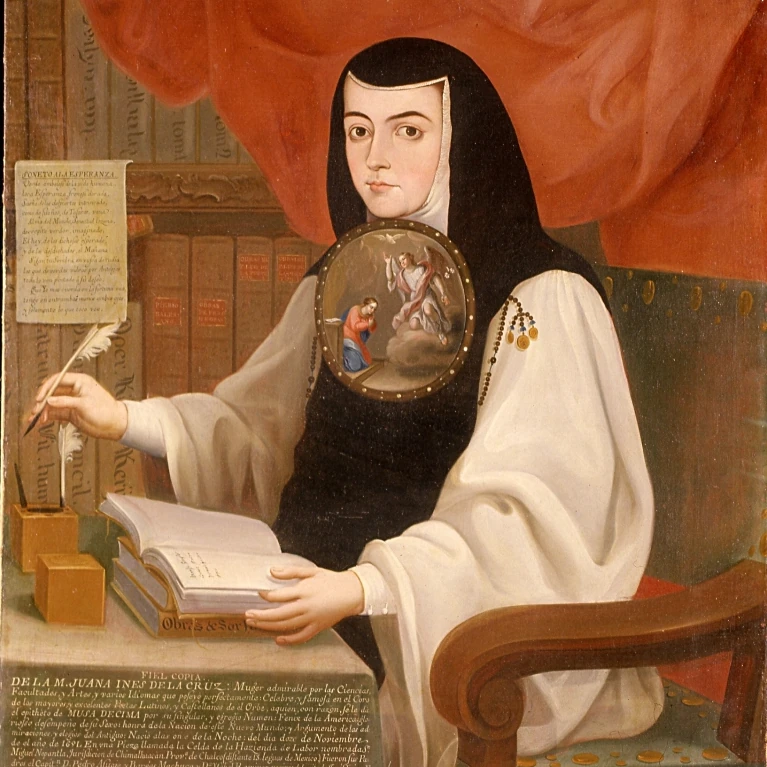Construyendo el espacio teatral criollo: Los empeños de una casa de Sor Juana Inés de la Cruz
(pp. 83-98; DOI: 10.23692/iMex.15.7)
 Loading...
Loading...Dr. Agnieszka Komorowska
Agnieszka Komorowska is assistant professor at the Department for Romance Studies at the University of Mannheim. She is currently preparing a habilitation thesis on the Economics of friendship in 17th and 18th Century Spanish Literature. She has completed her PhD in French literature with a book on the poetics of shame in 20th and 21st century French literature and thought. Her research focuses on the relationship of economy and literature and the study of affect and emotion in literature and cultural theory.
Recent book publications:
Agnieszka Komorowska, Annika Nickenig (ed.): Poetiken des Scheiterns. Formen und Funktionen unöknomischen Erzählens. Paderborn: Fink, 2018.
Agnieszka Komorowska: Scham und Schrift. Strategien literarischer Subjektkonstitution bei Duras, Goldschmidt und Ernaux. Heidelberg: Winter, 2017.
Recent journal articles:
[2016] „,Mais c’est d’une ambiguïté étrange.’ Die Rezeption von Michel Houellebecqs Roman Soumission in Frankreich und Deutschland.” In: Romanische Studien 3 / 2016, p. 137-169.
[2015] „Quel modèle pour écrire le réel ? L’expérimentation et l’exemplarité comme modèles économiques chez Émile Zola et Guy de Maupassant“. In: Romanesques 7 / 2015, p. 227-250. (co-authored with Annika Nickenig)
Con el festejo Los empeños de una casa, Sor Juana crea una obra transcultural en el sentido que las diferentes piezas de la casa, es decir sus textos (la comedia, la loa, los sainetes, las letras y el Sarao), siempre remiten a otro lugar cultural escondido detrás, a otro texto (en este caso calderoniano, moretino, etc.) y otro espacio. Las referencias al espacio americano como lugar transcultural sirven de hilo rojo en el festejo teatral, el cual, de esta manera, se constituye desde el principio como festejo criollo, adaptando los diferentes géneros teatrales peninsulares a la realidad y las necesidades americanas. El artículo adopta el concepto de pliegue de Gilles Deleuze para pensar los aspectos híbridos y transculturales de la comedia sorjuanina en términos espaciales. En Los empeños de una casa, el espacio del interior y del exterior están fundamentalmente intrincados: La casa es un laberinto barroco, en el que los sucesos de engaño y desengaño se traducen en un juego con lo visible y lo invisible, lo localizable y lo efímero. Nos servirán de ejemplo, primero, la loa con sus espacios alegóricos, cuya representación del poder virreinal está solapada por el poder del espacio americano, en segundo lugar, la comedia que juega de manera irónica y lúcida con los códigos del género, y luego el Sainete Segundo, que constituye una metra-reflexión sobre el teatro criollo y sus espacios.
The article analyzes the play and festejo Los empeños de una casa by the Mexican Golden Age playwright Sor Juana Inés de la Cruz and claims that the play is a transcultural creation. In the play, the different “rooms” of the house, meaning the different parts of the festejo, allude to other cultural spaces, whether they be texts from the canon of Spanish Golden Age theater (for example by Calderón de la Barca) or Latin-American texts and spaces. The allusions to Latin-American spaces run throughout the festejo and frame it as a creole play by adapting the Spanish genre to the reality and the esthetic and epistemic context of Colonial Mexico. The article applies Gilles Deleuze’s concept of the baroque fold in order to understand the transcultural aspects of Sor Juana’s play in terms of the construction of semantic spaces. The interior and exterior spaces of Los empeños de una casa are interwoven: the house is a baroque labyrinth in which comic fortunes and misfortunes are expressed as an oscillating game between the visible and the invisible, the ephemeral and the stable. In a first step we will analyze the loa and its allegorical spaces. Secondly, we will focus on the comedia and its ironic and insightful way to challenge genre conventions. In a final step, we will read the Sainete Segundo as a commentary on creole theatre and its spaces.
Claudia Jünke / Jutta Weiser - Editorial
Sara Poot Herrera – Documentos alrededor de Sor Juana
Beatriz Colombi – Figuraciones del mecenazgo y la autoría
Francisco Ramírez Santacruz – Las riquezas del Nuevo Mundo y el ingenio indiano
Jutta Weiser – Discurso criollo y autoría implicita
Claudia Jünke – Identificación y diferencia cultural
Agnieszka Komorowska – Construyendo el espacio teatral criollo
Verónica Grossi – La transformación del código petrarquista
Patricia Saldarriaga – La geometrización del poder
Kurt Hahn – La marginalidad puesta en el centro
Reviews



